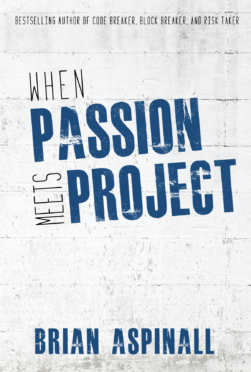As teachers, we have all known a child who claims to “not like school”. Often when asked why, that child may claim “because. I just don’t like it” and leave it at that. When I first began teaching 6 years ago, it was like I was setting out on a mission. My goal was to seek out those “I don’t like school” kids and turn them into educational enthusiasts! Simple, right?! Well, my eager, fresh-out-of -university self sure thought so!

I spent my first four years of teaching in the Nursery/Kindergarten world. My Nursery/ Kindergartens LOVED school! Everything was new, play-based, and exciting! I could do almost anything and they would eat it right up! (literally and figuratively… “Don’t eat the Play-Doh: A Memoir” could easily be the title of my book if I ever write one) However, two years ago I moved on up to the big leagues- GRADE ONE. It was here in this new classroom that was not filled with toys, a sandbox, or water table, that I had a BIG wake up call, and I realized I would have my work cut out for me.
The first week was great! We engaged in various activities that allowed us to build community, have fun, and get to know one another. However, once we settled into our routine and things like literacy and math groups were in full swing, I began to notice something. It was subtle at first, but as the days progressed, became more and more obvious. And here it is, folks… in grade 1… some kids, dare I say it… DON’T. LIKE. SCHOOL. There- I said it. Before I venture off, let me add one very important detail. I have the honour of teaching in an inner-city school. My heart is, and will always be, in the inner-city. I myself was raised by an amazing, hard working single mother of 2 in a low-income provincial housing complex. The inner-city is beautiful for all the diversity, stories and culture that it has to offer. However, like anything, it also has its challenges. Poverty is a common factor in our school community. Students often come to school with a lot weighing on their minds. As a teacher, I make it my sole mission to meet their social emotional needs as best I can; as educators I think we can all agree that it is very difficult for a child to learn if that child has a sad heart, scary thoughts in their head, not enough food in their tummies, or is unsure as to where “home” might be next. It can be difficult to juggle all the needs in the classroom, but we are teachers, and that’s what we do. But this one little guy who sat in my classroom during our instructional learning time, with his hood pulled up over his head, was really adding a whole new element to my juggling act. No matter what I tried, no matter how “fun” or engaging I tried to make reading and writing, his response was simple. “I DON’T LIKE SCHOOL”. When I would try and pry a little further, he would usually respond with the following answer, “It’s too hard.” This sweet, young, impressionable boy in my classroom, at the young age of 6 years old, already believed that he wasn’t “smart”. It broke my heart and I tried everything to try and build up his confidence; I gave him leadership roles, I provided him with alternative seating, I even let him build a fort to do his work inside of! (because who doesn’t like forts…am I right?!) These attempts seem to be “band-aid fixes”. But then- something amazing happened. We did our first STEAM activity. This little guy who spent most of his days using every avoidance strategy in the book began to shine like never before.
Our STEAM challenge that day had students creating a wearable device using the provided materials that would protect one of the body parts associated with the 5 senses. At first I was nervous… this challenge could be tricky. I had visions of my little friend having a complete meltdown at the first inconvenience. This is one of the few times I can say, I was happy I was wrong. I stood back and watched my students excitedly get to work; I kept an extra eye and ear on my little friend. I watched as he held a piece of construction paper in his hand. He moved it close to his face and began to bend it gently across his eyes. I then watched as he grabbed a pair of scissors, some tinfoil, and some tape. I had never seen him so focused! It soon became clear that this little guy was on his way to making some pretty stylish glasses! A few times he tried them on, and noticed they were a little too small. Instead of giving up, he just got right back to work! Cutting, taping, adding tinfoil; it was amazing. By the time he was finished, he was so excited to show me his product he could hardly talk without tripping over his words! And you know what he said next? Mark my words… “Can I make something else?!” I could hardly believe my ears! I told him he was an amazing engineer and that I couldn’t WAIT to see what he created next! He ended up making a Ninja-Turtle shell on his back- totally wearable with arm straps made of yarn! (Completely not part of our challenge but I could not have cared less!) His face beamed with pride!! Before the lunch bell rang, I took him by the hand down our hallway so he could show off his amazing creations to the other teachers and kids down our hallway. He couldn’t WAIT to show his work and explained how he did it with pride. And you want to hear the BEST part of all?! As we walked back to our classroom, that little guy looked up at me, and with a huge smile on his face, said “I actually am pretty smart.” AND THEN HE LET ME HUG HIM! Now, while we all go and grab our nearest Kleenex box, I just wanted to take a moment and say how POWERFUL this was. Not even for me- but for him. This activity allowed him to learn in his own way. All I did was provide him with a question and some materials. He had CHOICE. He had a VOICE. How empowering this can be!
Not all kids come to school having had someone in their home tell them how smart, amazing, or wonderful they are. And that is not because of a lack of love; It’s often just the product of circumstance. Although I told that little guy countless times a day how smart and amazing I believed he was, he needed opportunity to believe in himself. My words of encouragement were no longer empty ones, they carried truth.
STEAM has become my most powerful and empowering tool to engage my students. When we provide kids with the opportunity to make, create, think critically and figure things out on their own terms, we are giving that child a VOICE in our classroom. We are giving them the opportunity to take ownership of their own learning. I don’t believe there is true, authentic engagement without empowerment. My students are engaged during STEAM, and the skills and confidences that they acquire through this creative process empowers them to believe in themselves. And if there is one thing I hope my students learn during their time in our classroom, is that they are all LEARNERS. They all have the power to achieve great things in many ways. And most importantly, I hope that my students learn to believe in themselves.

My name is Christi Benoît and I teach Grade 1 in the Winnipeg School Division in Winnipeg, Manitoba.I became a teacher because I wanted to give back to the community; as a child I grew up in a low income neighbourhood and saw what a difference the teachers in my school made. I saw at a young age the power of relationships; this is my driving force every day in the classroom. I believe that relationships are the foundation and must be valued and prioritized!I enjoy engaging my students through use of STEAM; I want my students to see themselves as learners, problem solvers, and risk takers. I believe creative processes such as this allows students to become empowered and take the skills that they have developed in our classroom and share them with the world.

 For all the kids who grow up in a small town and think they don’t stand a chance. You do. I was once that kid.
For all the kids who grow up in a small town and think they don’t stand a chance. You do. I was once that kid.
Deeply touched by your words. Really, it’s difficult to settle in class with a wailing stomach n tormenting worries of the very question of shelter every moment. Above all, empathizing with these worries of one’s students is commendable. And, to manoeuvre their journey from ‘ I don’t like class’ to being enamored for studying is challenging as well as praiseworthy. A teacher becomes a lovable teacher when he/ she exemplifies composure setting all worries aside to make the children love their class. Only a heartful teacher full of passion can make this happen. Every teacher should take a lesson. Kudos !!